-
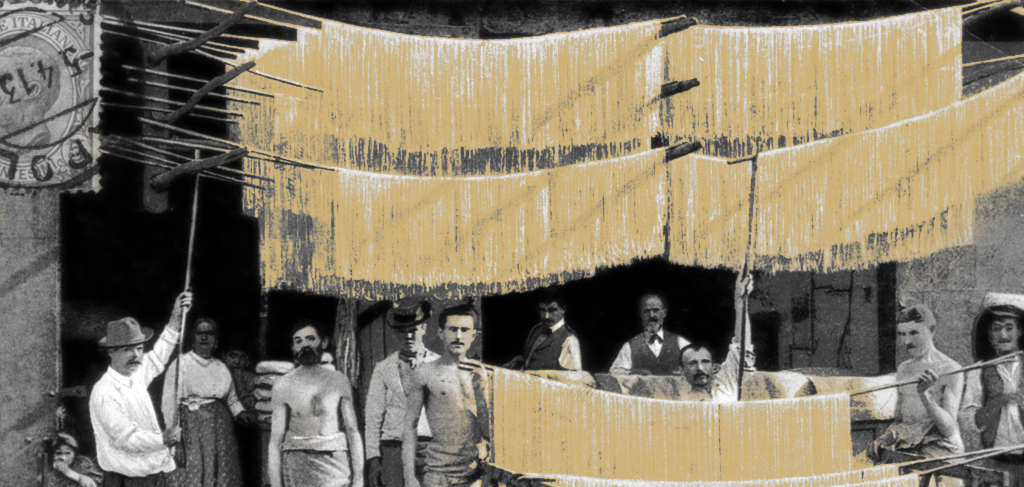 L'ORO BIANCO
L'ORO BIANCO -
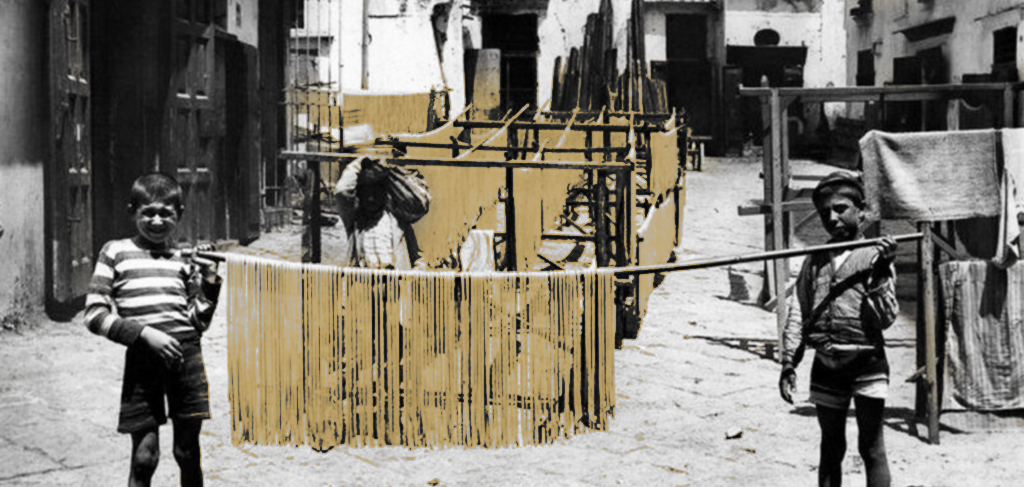
"Millennial travel"
THE ORIGINS OF PASTA GRAGNANO PGI
History, geography, human resources and exchange of knowledge were important for the birth of pasta. It’s a long history across many centuries, an ancient technical and spiritual wisdom handed down between generations.
Gragnano is situated between Sorrento and Costiera Amalfitana and this geographical location is the hearth of all it.
This long and narrow strip of land is characterized by the presence of raging torrents utilized to build barns in the past. For this reason, Amalfi Coast and Sorrentinean Peninsula were the granary of Naples.
According to some, this link between Gragnano and white gold dates back to Roman times. In fact, in that period along the evocative valley of the Mills took place the milling of durum wheat.
"The famina and amalfitan pasta makers"
ANCESTOR'S INGENUITY
In the modern age there were two important facts. The first one is about a great famine that struck the Kingdom of Naples. In times of greatest difficulty, our ancestors sharpen their brain and innovate the production process with a simple but also very effective tool: the bronze drawing.
With little investment and as much effort, pasta is born, a complete, healthy and ideal food to deal with food shortages.
In the next century, amalfitan pasta makers crossed Monti Lattari in order to settle in Gragnano. They brought with them their experience and wealth of heritage. This kind of migration has encouraged the exchange of knowledge and the birth of modern pasta factories.
"Progress & Innovation"
ITALY'S UNIFICATION
Gragnano faces the nineteenth century with renewed confidence. On 12 July 1845 an official recognition also arrives: Ferdinand II of Bourbon grants to the Gragnano masters the privilege of supplying the court with long pasta.
Since then, Gragnano has become the city of the Maccaruni to all effects
The unity of Italy does not change the plate, pardon, the cards on the table. Indeed, 1861 represents the peak of pasta production. In that period there are big changes. Urban planning modify the face of Gragnano. The symbol is via Roma, redesigned to favor its exposure to the sun and become the natural pasta dryer, exposed there to dry on wooden trestles. Meanwhile in 1885 the railway reaches our city.
It is an important event because along the tracks flour, flour and the fame of the Gragnano pasta makers who reach the most remote corners of Italy and the world.
"PGI award and Pastificio Ducato d'Amalfi"
CRISIS AND REBIRTH
The XIX century was critical period for Gragnano pasta Factories that faced first and second world war and then the competition of big northern Pasta Factories. For this reason, pasta makers did a change of strategy: they chose to bet on the excellence of product.
It was a winning choose.
The rest is chronicle: in 2013 Gragnano pasta gets pgi awards, and on september 2019, we open Pastificio Ducato D’Amalfi that integrate production, live cooking, culture and multimedia tour.
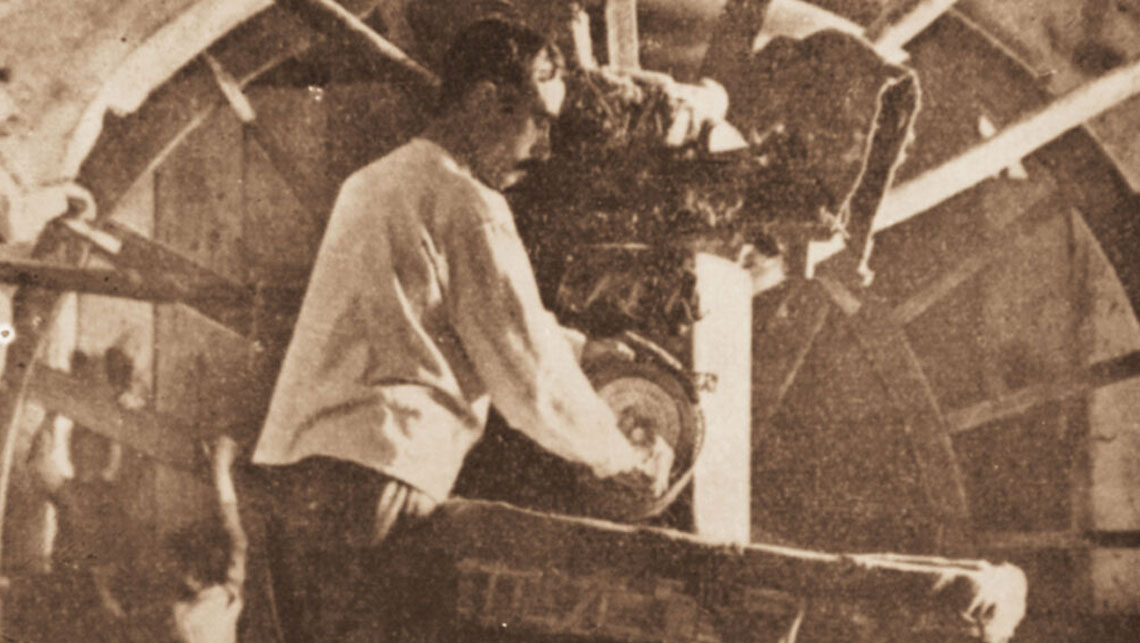
"The famina and amalfitan pasta makers"
ANCESTOR'S INGENUITY
In the modern age there were two important facts. The first one is about a great famine that struck the Kingdom of Naples. In times of greatest difficulty, our ancestors sharpen their brain and innovate the production process with a simple but also very effective tool: the bronze drawing.
With little investment and as much effort, pasta is born, a complete, healthy and ideal food to deal with food shortages.
In the next century, amalfitan pasta makers crossed Monti Lattari in order to settle in Gragnano. They brought with them their experience and wealth of heritage. This kind of migration has encouraged the exchange of knowledge and the birth of modern pasta factories.
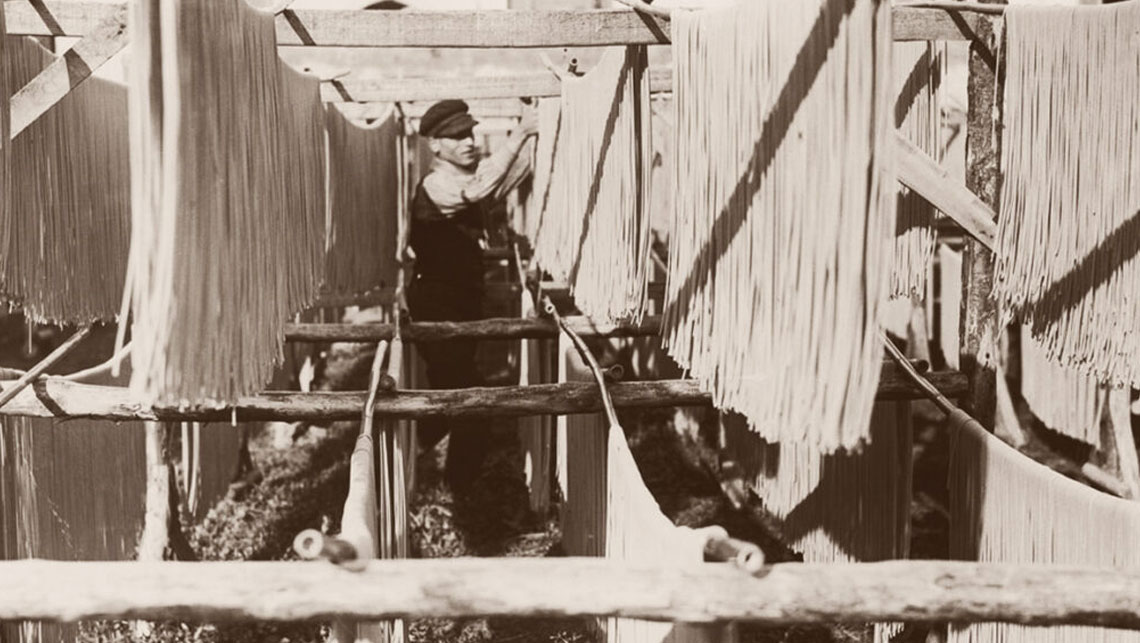
"Progress & Innovation"
ITALY'S UNIFICATION
Gragnano faces the nineteenth century with renewed confidence. On 12 July 1845 an official recognition also arrives: Ferdinand II of Bourbon grants to the Gragnano masters the privilege of supplying the court with long pasta.
Since then, Gragnano has become the city of the Maccaruni to all effects
The unity of Italy does not change the plate, pardon, the cards on the table. Indeed, 1861 represents the peak of pasta production. In that period there are big changes. Urban planning modify the face of Gragnano. The symbol is via Roma, redesigned to favor its exposure to the sun and become the natural pasta dryer, exposed there to dry on wooden trestles. Meanwhile in 1885 the railway reaches our city.
It is an important event because along the tracks flour, flour and the fame of the Gragnano pasta makers who reach the most remote corners of Italy and the world.
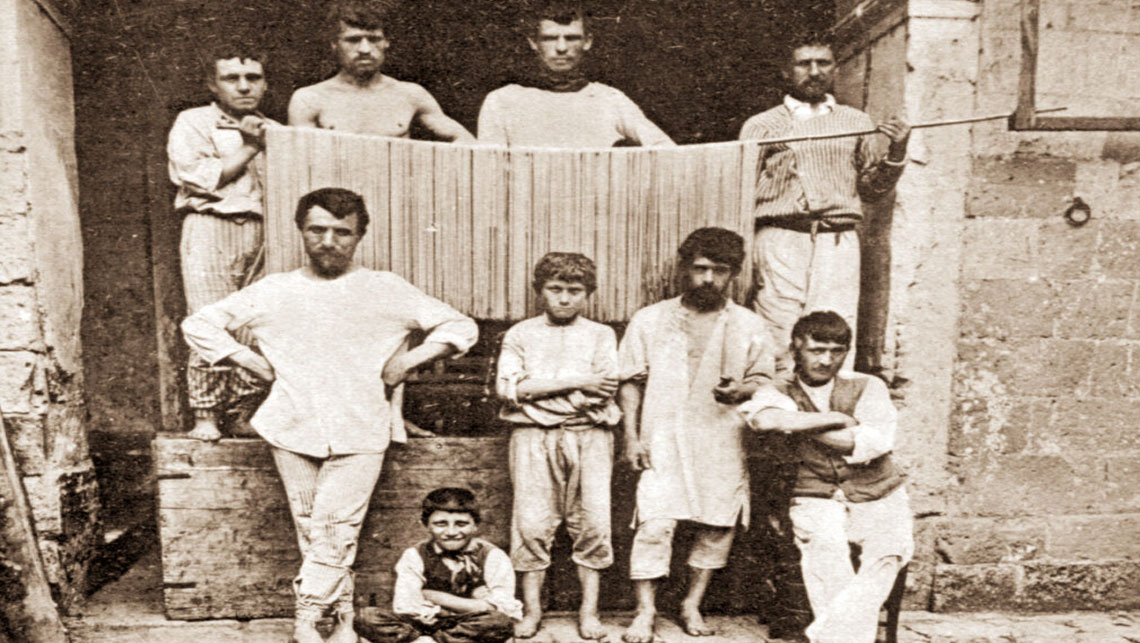
"PGI award and Pastificio Ducato d'Amalfi"
CRISIS AND REBIRTH
The XIX century was critical period for Gragnano pasta Factories that faced first and second world war and then the competition of big northern Pasta Factories. For this reason, pasta makers did a change of strategy: they chose to bet on the excellence of product.
It was a winning choose.
The rest is chronicle: in 2013 Gragnano pasta gets pgi awards, and on september 2019, we open Pastificio Ducato D’Amalfi that integrate production, live cooking, culture and multimedia tour.
